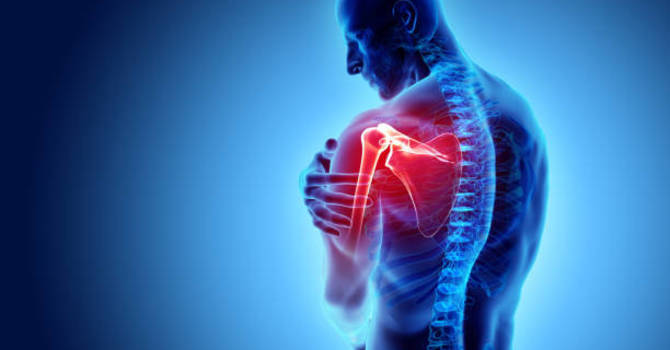
As parents, we strive to provide the healthiest environment possible for our children, particularly in those delicate early months of life. One environmental factor that’s often overlooked but can significantly impact a baby's health is mold exposure. Infants are especially vulnerable to the harmful effects of mold because their immune systems and lungs are still developing. At Tulsi Wellness Club, we are committed to helping families create safe, nurturing environments, and understanding the risks of infant mold exposure is crucial for every parent.
Why Are Infants More Susceptible to Mold Exposure?
Infants are at a higher risk of mold-related health issues for several reasons:
-
Immature Immune System: A newborn’s immune system is still developing, making them less capable of defending against environmental threats like mold spores and toxins. As a result, they are more prone to infections and inflammatory responses when exposed to mold.
-
Developing Lungs: An infant’s respiratory system is particularly sensitive to airborne particles. Inhalation of mold spores can irritate their delicate lungs, potentially leading to respiratory problems that may have long-term effects.
-
Increased Time Indoors: Babies spend most of their time indoors, which increases their exposure to indoor air quality issues, including mold, especially if the household has poor ventilation or high humidity levels.
-
Mouth Exploration: Infants often explore the world by putting objects in their mouths. If a toy, blanket, or other household item has been contaminated with mold, an infant can inadvertently ingest mold spores.
Health Risks of Mold Exposure in Infants
The health effects of mold exposure in infants can range from mild discomfort to serious health issues, depending on the level of exposure and the type of mold present. Here are some potential health risks:
Respiratory Problems
Mold exposure can cause or worsen respiratory issues in infants, such as:
- Coughing: Persistent coughing or wheezing is common in infants exposed to mold spores.
- Shortness of Breath: Mold can lead to airway irritation and inflammation, making it difficult for an infant to breathe properly.
- Asthma: Infants exposed to mold early in life may be at greater risk of developing asthma as they grow older. If the baby already has a family history of asthma, mold exposure can increase the likelihood of developing the condition.
Allergic Reactions
Mold exposure can trigger allergic reactions in infants, even if they do not have a history of allergies. Common symptoms include:
- Runny or stuffy nose
- Sneezing
- Itchy, watery eyes
- Skin rashes or eczema
Infants are often too young to communicate discomfort, so it’s important for parents to monitor their baby closely for signs of an allergic reaction.
Chronic Sinus Issues
Mold can lead to chronic sinus congestion or infections in babies, making it difficult for them to breathe or sleep comfortably. Infants with chronic sinus issues may have trouble feeding, sleeping, or gaining weight properly, which can affect their overall development.
Infections
Some molds produce mycotoxins, harmful substances that can weaken the immune system and increase the risk of infections. Infants exposed to these toxins may be more susceptible to respiratory infections, ear infections, or even systemic infections, which can have serious health consequences.
Developmental Concerns
Though research is still ongoing, some studies suggest that prolonged exposure to toxic mold, such as Stachybotrys (commonly known as black mold), may affect neurological development. Infants exposed to mold toxins may experience developmental delays, behavioral problems, or cognitive issues later in life.
How to Identify Mold in Your Home
Mold often grows in hidden areas of the home, making it difficult to detect. Here are some common signs of mold growth:
- Musty Odor: Mold often produces a distinct, musty smell, even if it is not visible.
- Visible Growth: Mold may appear as black, green, or white spots on walls, ceilings, carpets, or behind furniture.
- Water Damage: If your home has experienced water damage, leaks, or high humidity levels, it’s likely that mold may begin to grow in those areas.
- Condensation: Excess condensation on windows or walls can indicate a moisture problem, which encourages mold growth.
At Tulsi Wellness Club, we emphasize the importance of early detection and prevention to protect your infant from mold exposure.
Preventing Mold Exposure for Infants
Creating a mold-free environment is essential for your baby’s health. Here are some practical steps to prevent mold growth in your home:
Control Humidity Levels
Mold thrives in humid environments, so keeping indoor humidity levels below 50% is key. Use a dehumidifier in rooms where moisture is high, such as bathrooms, basements, and kitchens. Also, ensure proper ventilation in these areas to reduce moisture buildup.
Regularly Inspect for Leaks and Water Damage
Check your home regularly for leaks, water stains, or signs of dampness, particularly in areas like basements, attics, and under sinks. Address any water damage immediately, as mold can begin to grow within 24-48 hours of a water leak.
Clean and Dry Items Regularly
Keep your infant’s toys, blankets, and bedding clean and dry. Avoid storing these items in damp areas like basements or garages, as mold can easily grow on soft fabrics and porous materials.
Use Mold-Resistant Paint and Materials
If you are renovating or painting your home, consider using mold-resistant paints or building materials, especially in areas prone to moisture. This can help prevent mold growth before it starts.
Proper Ventilation
Make sure rooms are well-ventilated by opening windows or using exhaust fans, particularly in areas like bathrooms and kitchens where moisture accumulates. Good airflow helps prevent the conditions mold needs to grow.
What to Do If Your Infant Has Been Exposed to Mold
If you suspect that your baby has been exposed to mold, it’s important to take action immediately:
-
Remove the Source: Address the mold problem in your home as quickly as possible. Clean visible mold with natural cleaning agents such as vinegar or hydrogen peroxide, or hire a professional mold remediation service if the mold is extensive.
-
Seek Medical Attention: If your baby shows symptoms of mold exposure, such as respiratory distress, allergies, or infections, consult your pediatrician. Your healthcare provider can assess whether mold exposure is contributing to your baby’s symptoms and recommend treatment.
-
Focus on Immune Support: At Tulsi Wellness Club, we recommend supporting your baby’s immune health through proper nutrition and breastfeeding if possible. Breast milk contains antibodies that help protect infants from infections and environmental toxins, including mold.
-
Monitor Your Baby’s Health: If your baby has had mold exposure, continue to monitor their health closely. Watch for any signs of breathing difficulties, persistent coughing, or allergic reactions, and seek medical advice if symptoms worsen.
Conclusion
Protecting your baby from mold exposure is essential to ensure their health and development. Infants are particularly vulnerable to the harmful effects of mold, but with proactive steps like regular home inspections, controlling humidity, and ensuring proper ventilation, you can reduce the risk of mold-related health issues.
At Tulsi Wellness Club, we believe that a healthy home is foundational to your family’s overall wellness. If you have concerns about mold exposure in your home or your baby’s health, we encourage you to reach out for support. Together, we can create a safe, nurturing environment where your baby can thrive.
Dr. RD Marquiss
Contact Me


